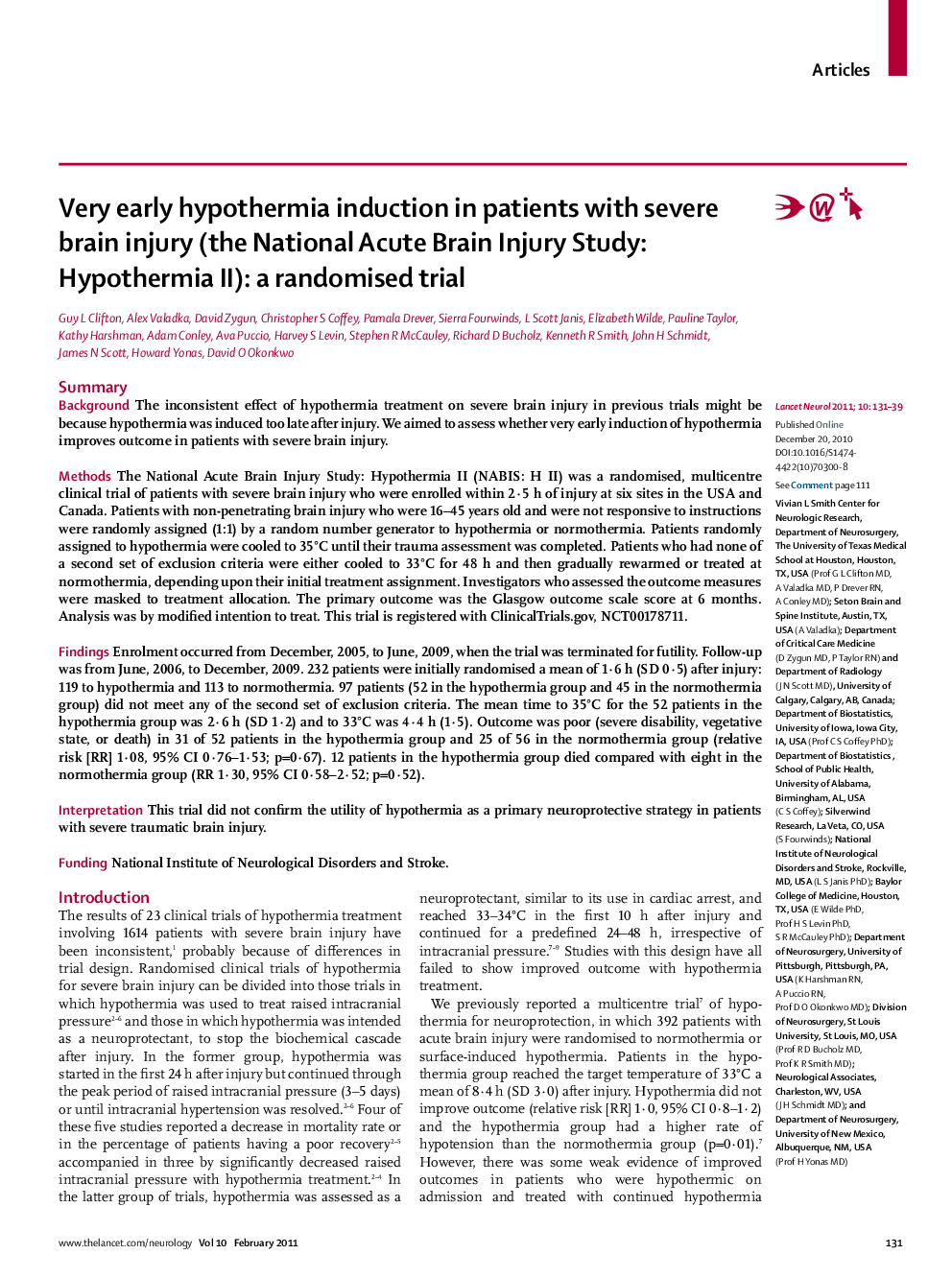| Article ID | Journal | Published Year | Pages | File Type |
|---|---|---|---|---|
| 3066893 | The Lancet Neurology | 2011 | 9 Pages |
SummaryBackgroundThe inconsistent effect of hypothermia treatment on severe brain injury in previous trials might be because hypothermia was induced too late after injury. We aimed to assess whether very early induction of hypothermia improves outcome in patients with severe brain injury.MethodsThe National Acute Brain Injury Study: Hypothermia II (NABIS: H II) was a randomised, multicentre clinical trial of patients with severe brain injury who were enrolled within 2·5 h of injury at six sites in the USA and Canada. Patients with non-penetrating brain injury who were 16–45 years old and were not responsive to instructions were randomly assigned (1:1) by a random number generator to hypothermia or normothermia. Patients randomly assigned to hypothermia were cooled to 35°C until their trauma assessment was completed. Patients who had none of a second set of exclusion criteria were either cooled to 33°C for 48 h and then gradually rewarmed or treated at normothermia, depending upon their initial treatment assignment. Investigators who assessed the outcome measures were masked to treatment allocation. The primary outcome was the Glasgow outcome scale score at 6 months. Analysis was by modified intention to treat. This trial is registered with ClinicalTrials.gov, NCT00178711.FindingsEnrolment occurred from December, 2005, to June, 2009, when the trial was terminated for futility. Follow-up was from June, 2006, to December, 2009. 232 patients were initially randomised a mean of 1·6 h (SD 0·5) after injury: 119 to hypothermia and 113 to normothermia. 97 patients (52 in the hypothermia group and 45 in the normothermia group) did not meet any of the second set of exclusion criteria. The mean time to 35°C for the 52 patients in the hypothermia group was 2·6 h (SD 1·2) and to 33°C was 4·4 h (1·5). Outcome was poor (severe disability, vegetative state, or death) in 31 of 52 patients in the hypothermia group and 25 of 56 in the normothermia group (relative risk [RR] 1·08, 95% CI 0·76–1·53; p=0·67). 12 patients in the hypothermia group died compared with eight in the normothermia group (RR 1·30, 95% CI 0·58–2·52; p=0·52).InterpretationThis trial did not confirm the utility of hypothermia as a primary neuroprotective strategy in patients with severe traumatic brain injury.FundingNational Institute of Neurological Disorders and Stroke.
